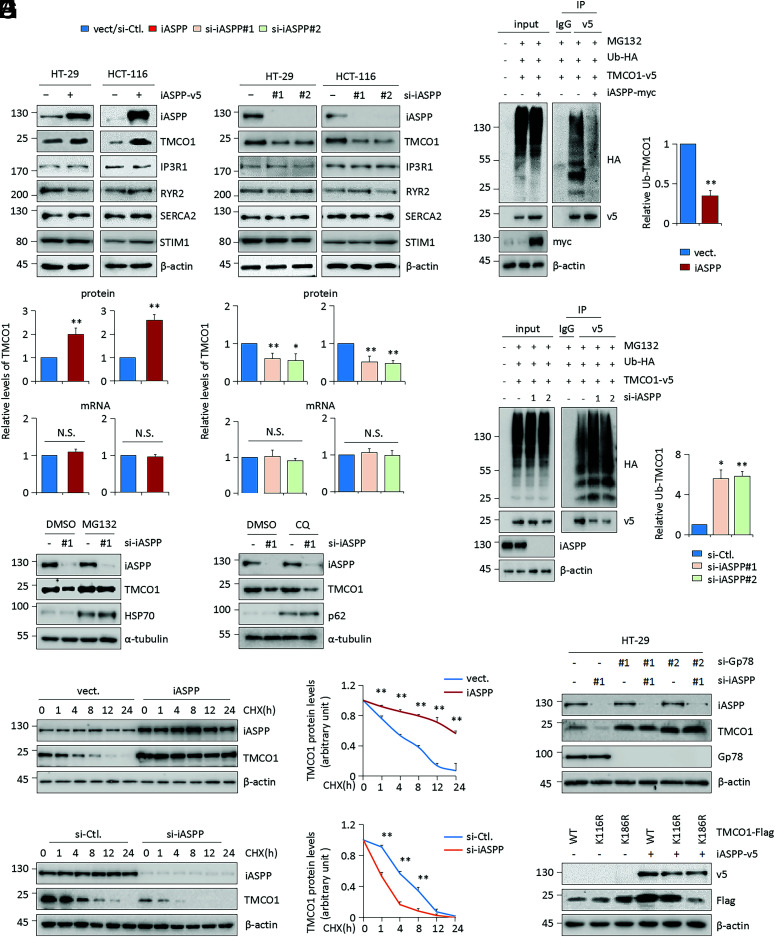Fig. 4.
iASPP protects TMCO1 from ubiquitin-mediated proteasome degradation. (A) TMCO1 protein and mRNA levels were determined by WB and qRT-PCR, respectively, after iASPP OE or KD in HT-29 and HCT-116 cells. WB bands of TMCO1 were quantified by Image J and the data were present in the bar graph. (B) TMCO1 protein levels were determined by WB after iASPP KD in the presence or absence of proteasome inhibitor MG132 (40 μM) or lysosome inhibitor CQ (50 μM) in HT-29 cells. α-tubulin was used as a loading control. (C and D) Representative WB and quantification of TMCO1 protein after iASPP OE (C) or KD (D) in HT-29 cells in the presence of 100 μg/mL CHX at the indicated time periods. TMCO1 levels in the untreated cells were normalized to 1. (E and F) Ub-TMCO1 was determined by IP of anti-v5 followed by WB with anti-HA after transfecting TMCO1-v5 and Ub-HA in iASPP OE (E) and KD (F) HT-29 cells in the presence of MG132 (20 μM). β-actin was used as a loading control. The blots of Ub-TMCO1 were analyzed by image J. Values in control cells were normalized to 1. (G, H) Endogenous TMCO1 levels were determined by WB after iASPP KD and/or Gp78 KD (G). The Flag-tagged TMCO1 (WT, K116R, a ubiquitination irrelevance mutant, and K186R, a key ubiquitination defective mutant) levels were evaluated by WB after ectopic iASPP OE in HT-29 cells (H). The TMCO1-ub bands were quantified by imageJ. β-actin was used as a loading control. The data derived from three independent experiments are presented as mean ± SEM in the bar graphs (A, E, and F) (quantification data for B, G, and H are shown in SI Appendix, Fig. S4 A and C) or line graphs (C and D). *P < 0.05; **P < 0.01; N.S., not significant (A, C, D, E, F, and H).

